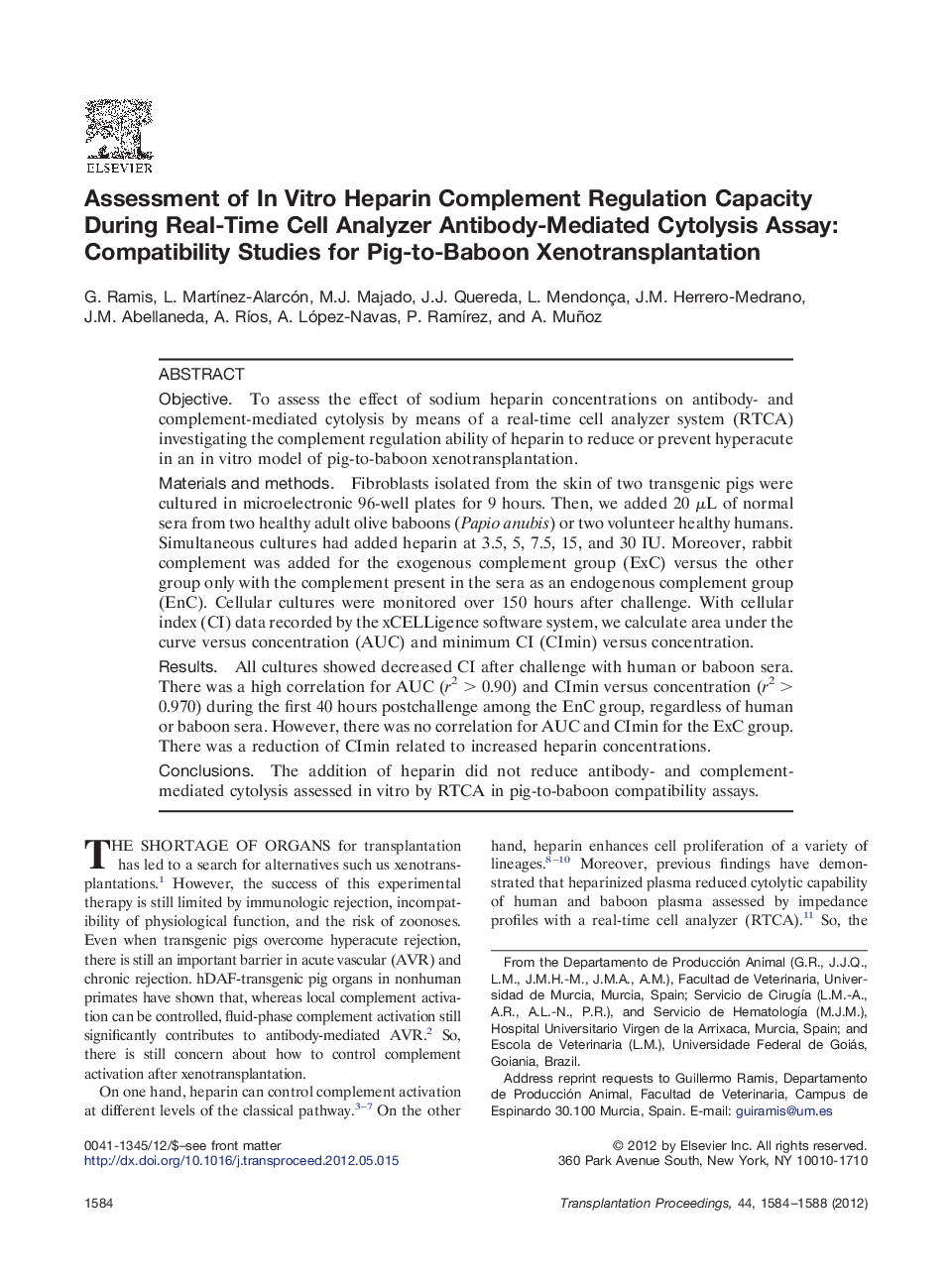| Article ID | Journal | Published Year | Pages | File Type |
|---|---|---|---|---|
| 4259913 | Transplantation Proceedings | 2012 | 5 Pages |
ObjectiveTo assess the effect of sodium heparin concentrations on antibody- and complement-mediated cytolysis by means of a real-time cell analyzer system (RTCA) investigating the complement regulation ability of heparin to reduce or prevent hyperacute in an in vitro model of pig-to-baboon xenotransplantation.Materials and methodsFibroblasts isolated from the skin of two transgenic pigs were cultured in microelectronic 96-well plates for 9 hours. Then, we added 20 μL of normal sera from two healthy adult olive baboons (Papio anubis) or two volunteer healthy humans. Simultaneous cultures had added heparin at 3.5, 5, 7.5, 15, and 30 IU. Moreover, rabbit complement was added for the exogenous complement group (ExC) versus the other group only with the complement present in the sera as an endogenous complement group (EnC). Cellular cultures were monitored over 150 hours after challenge. With cellular index (CI) data recorded by the xCELLigence software system, we calculate area under the curve versus concentration (AUC) and minimum CI (CImin) versus concentration.ResultsAll cultures showed decreased CI after challenge with human or baboon sera. There was a high correlation for AUC (r2 > 0.90) and CImin versus concentration (r2 > 0.970) during the first 40 hours postchallenge among the EnC group, regardless of human or baboon sera. However, there was no correlation for AUC and CImin for the ExC group. There was a reduction of CImin related to increased heparin concentrations.ConclusionsThe addition of heparin did not reduce antibody- and complement-mediated cytolysis assessed in vitro by RTCA in pig-to-baboon compatibility assays.
